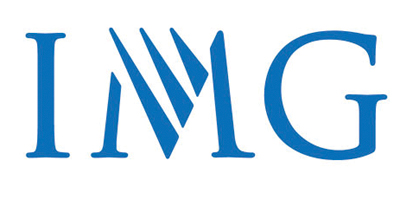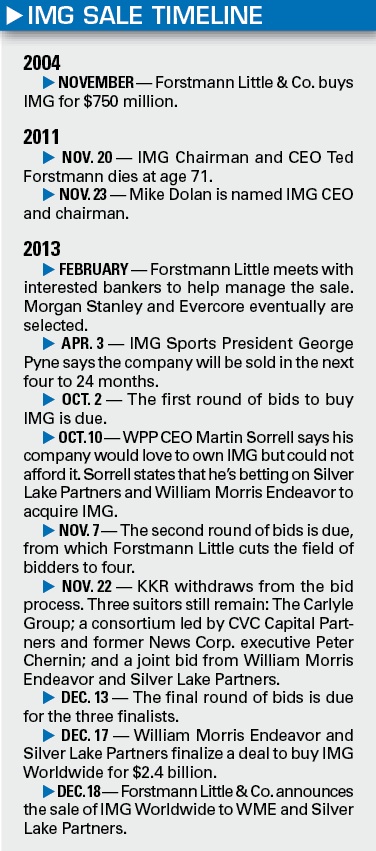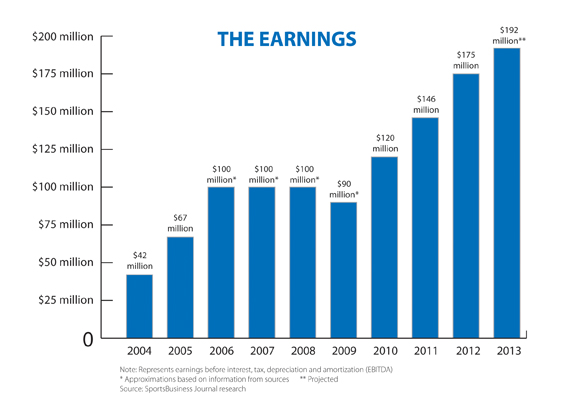In the middle of Endeavor’s push in 2009 to take over the much larger Hollywood talent agency William Morris, Endeavor co-founder Ari Emanuel turned to Ted Forstmann for advice. He had known the leverage buyout pioneer for years and considered him a friend. Emanuel had an idea.
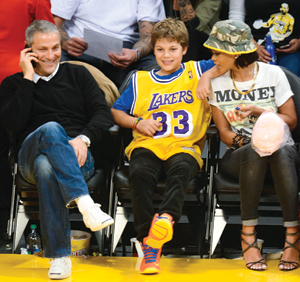 |
Ari Emanuel watches the Lakers with son Leo and recording artist Rihanna, a WME client.
Photo by: GETTY IMAGES
|
What if Endeavor bought IMG?
Forstmann, whose company Forstmann Little bought IMG for $750 million in 2004, shot the proposal down. No way. Not any time soon. IMG would be far more valuable after a few more years of operation.
Last month, both men were proved right. William Morris Endeavor paid $2.4 billion for IMG. The deal gave Emanuel the company he wanted and gave Forstmann Little investors a healthy return on their investment. It also brought an end to a tumultuous sales process that was punctuated by an internal power struggle among IMG leaders, public accusations that IMG divisions missed their revenue goals and confusion over IMG’s accounting practices.
Related stories:
More than a dozen people familiar with the process, who declined to speak on the record because of nondisclosure agreements, said it was one of the most unusual auctions of its kind.
“Everyone complained that this was a poorly run process, but those guys really rocked it with William Morris Endeavor,” said one source. “That was a great deal.”
Talk of a sale of IMG began immediately after Forstmann’s death in 2011. There were 15 limited partners that invested in Forstmann Little’s final fund, which bought IMG in 2004, and they had the option to force a sale of IMG after Forstmann’s death. But they extended the expiration of the fund until this year, setting in motion an auction process that began in August.
Mark MacDougall, a litigator with Akin Gump Strauss Hauer & Feld, ran the process. Forstmann gave MacDougall power of attorney before his death, and the attorney ran what many described as a rigid process that was as focused on getting the right price as making sure the company was sold in a way that couldn’t be questioned afterward. Work on the sale was often scheduled around his day job at Akin Gump, where he was working on a lawsuit in London.
“He was the key driver but very out of his element,” a source said. “Normally, people know the business and buyers, but he relied on others for that.”
Adding to that unique dynamic was tension in IMG’s executive ranks. Prior to his death, Forstmann promoted IMG Chief Financial Officer Mike Dolan to CEO. It was a job that IMG Sports & Entertainment President George Pyne had wanted. A natural friction arose between them.
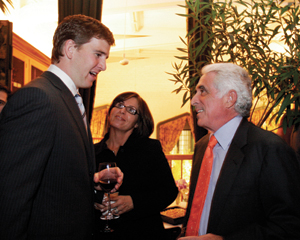 |
Ted Forstmann, with Eli Manning in 2007, steered IMG away from athlete representation in his time leading the firm.
Photo by: SHANA WITTENWYLER
|
Dolan’s financial background never meshed with Pyne’s background, which is rooted in sports and around national sales and operations. Pyne had led IMG’s push into the college business through more than $300 million in acquisitions.
Most of IMG’s senior management, including IMG College President Ben Sutton, IMG Academies President Sam Zussman and others, reported to Pyne and aligned themselves with him.
The rift between Pyne and Dolan was visible to those inside and outside the company. In addition, sources said Dolan was unhappy Pyne wound up on IMG’s board after Forstmann’s death, and Pyne blamed Dolan for leaking a story that blamed IMG’s sports and college divisions for missing their revenue goals.
Tension also developed between Dolan and MacDougall. Dolan traveled to the Middle East to meet with a sovereign wealth fund interested in acquiring as much as 20 percent of the company. MacDougall did not like the idea that Dolan was shopping a portion of the company that was supposed to be sold in its entirety through an auction process, sources said.
In August, MacDougall led a process to select two banks to oversee the sale. Forstmann had close relationships with Goldman Sachs, JPMorgan and The Raine Group, and all of those banks thought they would win the business. But in the end the sales process went to Evercore and Morgan Stanley.
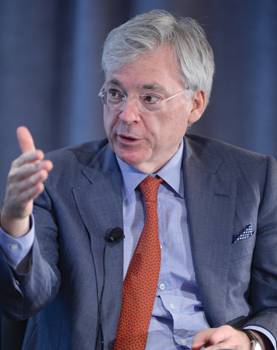 |
Tension developed between IMG CEO Mike Dolan and others both inside and outside the company.
Photo by: MARC BRYAN-BROWN
|
The banks met with IMG management early and went over a list of potential buyers of the company. The list included everyone from Formula One owner CVC Capital to agencies such as CAA.
IMG management made it clear that it didn’t want another agency to buy the company, and it was most opposed to CAA and WME, a pair of agencies built on talent representation. IMG, under Forstmann’s direction, largely pulled out of the athlete representation business. Management’s stance didn’t mean those bidders would be eliminated, but it set the table for having to negotiate a deal that wasn’t contingent on management staying with the company after a sale.
Bankers began accepting bids for the company in late September. It trimmed a list of more than 35 interested bidders to 10 finalists and held management meetings with each.
Each sale presentation started with Dolan giving an
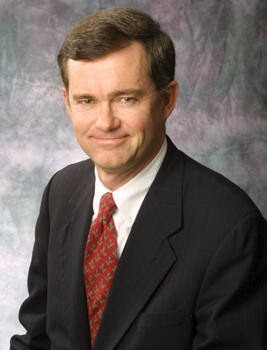 |
MARK MACDOUGALL
Photo: COURTESY OF AKIN GUMP STRAUSS HAUER & FELD
|
executive introduction, and then ceding the floor to Pyne, who spent the next hour and a half talking about IMG’s sports and entertainment businesses, which included tennis, golf and fashion. Pyne turned things over to Sutton, who talked about the college business. Dolan spoke about the company’s financial picture and joint ventures in Brazil, China and India, and IMG Media President Michel Masquelier talked about the media business.
Each presentation lasted more than three hours, and they were scheduled in tight succession. There were moments where one group exited the room and walked in one direction around rectangular halls at Morgan Stanley’s offices while another group walked down the hall in the opposite direction and entered the room for the same presentation.
The bankers trimmed the list of 10 to four finalists in November. It was at this time that CAA was cut due to a low bid. The finalists were: WME and Silver Lake Capital; CVC Capital and Peter Chernin’s Chernin Group; Carlyle Group and IMC; and KKR.
KKR submitted one of the highest nonbinding offers, indicating it would pay $2.5 billion to $2.7 billion for IMG. The leveraged buyout specialist was a finalist for Learfield Sports, IMG College’s biggest competitor, which sold for more than $500 million last year, and it was considered by some executives on the sell side to be a darkhorse buyer.
The $2.7 billion number was leaked to the New York Post, which erroneously reported the bid came from CVC Capital and the Chernin Group. The price tag caught everyone by surprise and immediately upped the anticipation across IMG that the company would sell for at least that.
But KKR, which actually had submitted that bid, bowed out of the process a week before final and binding offers were due.
The company’s exit left just WME, CVC and Carlyle in play. Both WME and CVC had shown the most interest in the company to date. The detail of the questions they asked showed how serious they were. One asked an executive with IMG Media what kind of flame retardant the company had to protect its video archives in the case of a fire.
“Helium,” an IMG Media executive said.
“What kind of helium?” the potential buyer asked, to the surprise of people in the room.
It was during the management interview process that Emanuel began to win over IMG management. He projected a far different image of himself than the fictionalized version from HBO’s “Entourage,” where he was the inspiration for Ari Gold. Unlike Gold, who actor Jeremy Piven portrays as aggressive and bombastic, Emanuel came off as curious and subdued, qualities that ran contrary to his reputation. He also liked the college business despite not knowing much about it.
“Everyone was impressed with his ability to read a room,” said one source involved in the process. “He came off as a reasonable person.”
Just before final bids were submitted, bidders publicly questioned IMG’s financial statements. Forstmann Little said IMG this year would earn $200 million earnings before interest, taxes, depreciation and amortization (EBITDA). But in a story leaked to Bloomberg, bidders argued that the joint venture business should be reduced by $19 million and nonrecurring revenue in the college business should drop earnings another $20 million. Doing so would take total EBITDA from $191 million to roughly $150 million.
“There was a lot of funky accounting and no one could get comfortable with the numbers,” a source said. “That led to a divergence of views on what IMG was worth. It wasn’t a divergence of multiple. It was a divergence on a multiple off of what.”
Final bids were submitted Dec. 13. WME put in a nearly $2.4 billion bid. CVC put in a bid valued at $1.9 billion that would have required some IMG shareholders to retain a 20 percent stake in the company. And Carlyle submitted the lowest bid, a move that some interpreted as an effort to get IMG on the cheap if concerns about the EBITDA scared off other bidders.
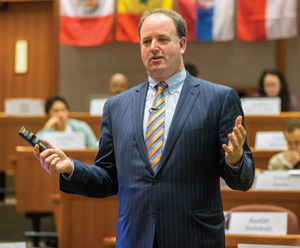 |
George Pyne led the push into college sports, and most senior management reported to him.
Photo by: GETTY IMAGES
|
The bankers and trustees talked about the viability of the CVC bid, but MacDougall pushed the group to move ahead quickly with the highest offer. The banks moved fast, negotiating exclusively with WME, and closed the deal four days later.
In the end, WME was able to offer more than CVC because it saw more efficiency between its business and IMG. CVC would have been buying IMG and operating it as it is. It saw about $30 million to $40 million in costs it could cut from the business. But WME plans to roll it into its existing operations where it believes it can cut as much as $100 million in costs and boost total EBITDA of the combined company to more than $350 million.
The deal was announced Dec. 18. Emanuel and his co-CEO Patrick Whitesell didn’t celebrate. They went straight to work, flying to Winston-Salem, N.C., to meet with staff at IMG College and London to meet with the group at IMG Media.
From the time Forstmann bought IMG in 2004, the company has operated under a certain amount of tension, knowing it would be sold in the future. Nobody knew when. But they knew a sale was inevitable.
As the company marched toward that day, Forstmann, Pyne and others transformed IMG into a company that its founder, Mark McCormack, wouldn’t recognize. Athlete representation, which marked the start of the company, became a sliver of its overall business. Its media and college divisions drove its bottom line.
WME is poised to reshape IMG all over again. It plans to push the company back into talent representation, acquire more media rights and continue to grow its college business.
The deal won’t close for three to six months. When it does, IMG’s name will remain. But it will finally be part of Endeavor, just like Emanuel proposed five years ago.
Staff writer Michael Smith contributed to this report.


